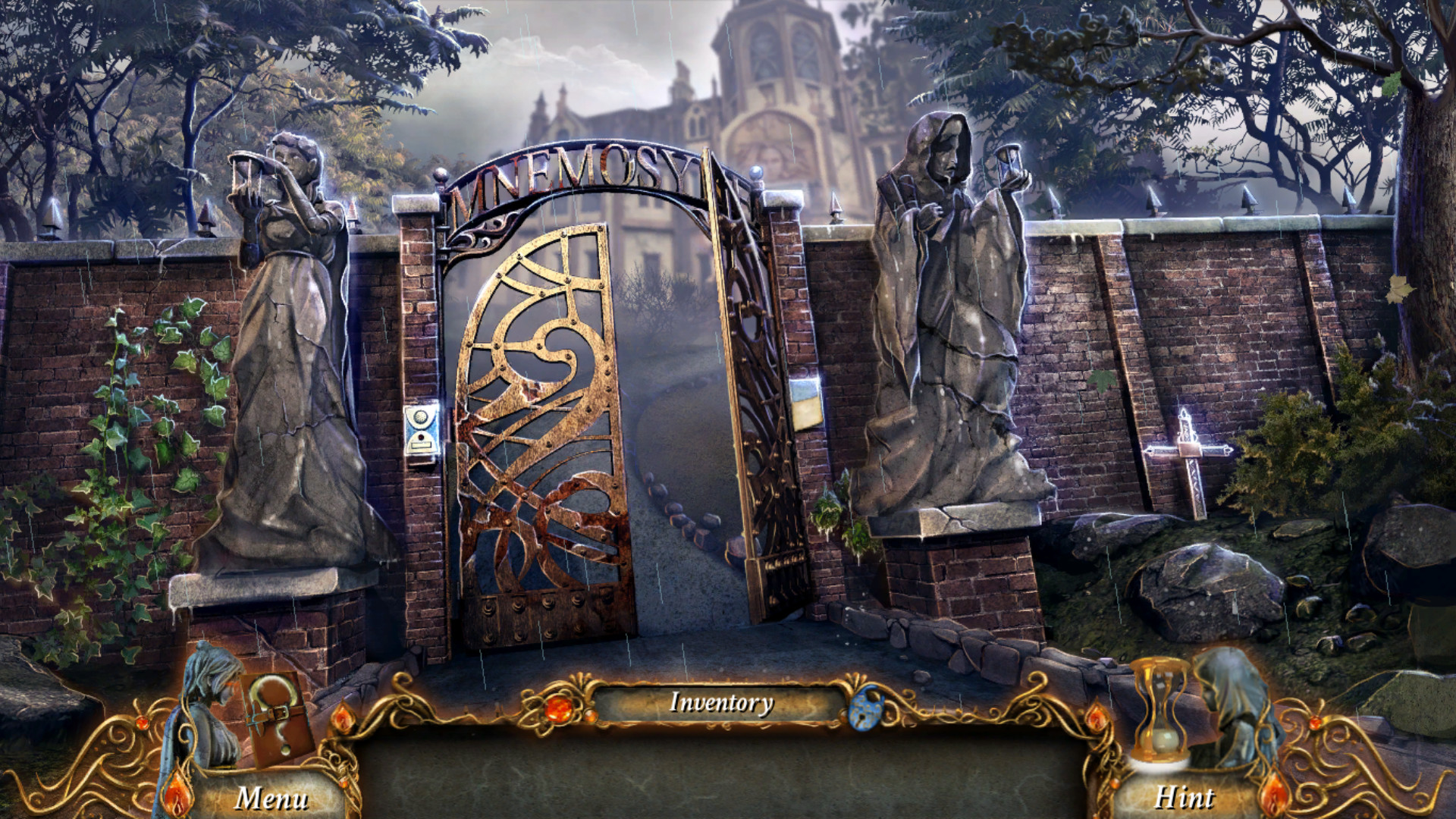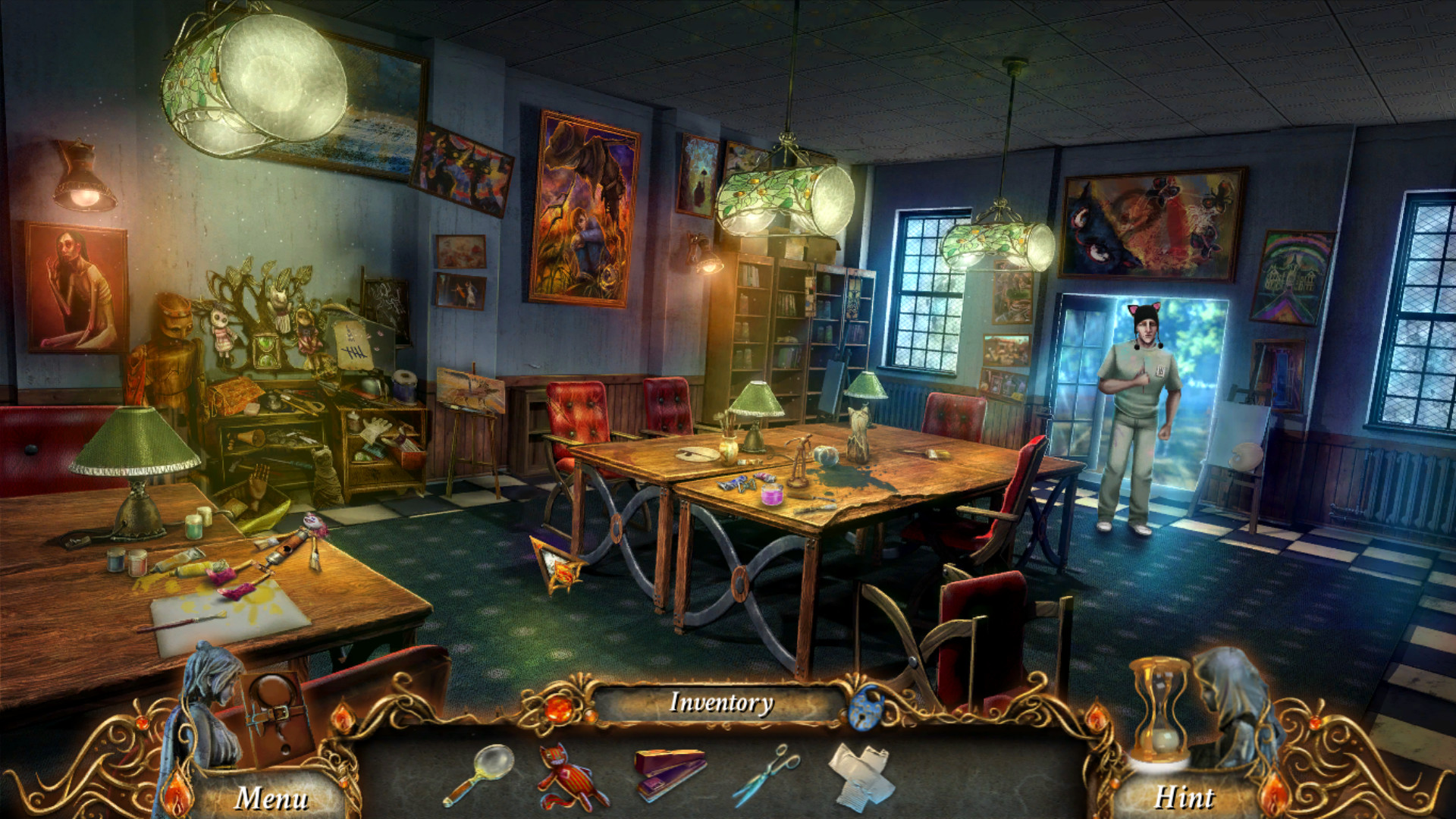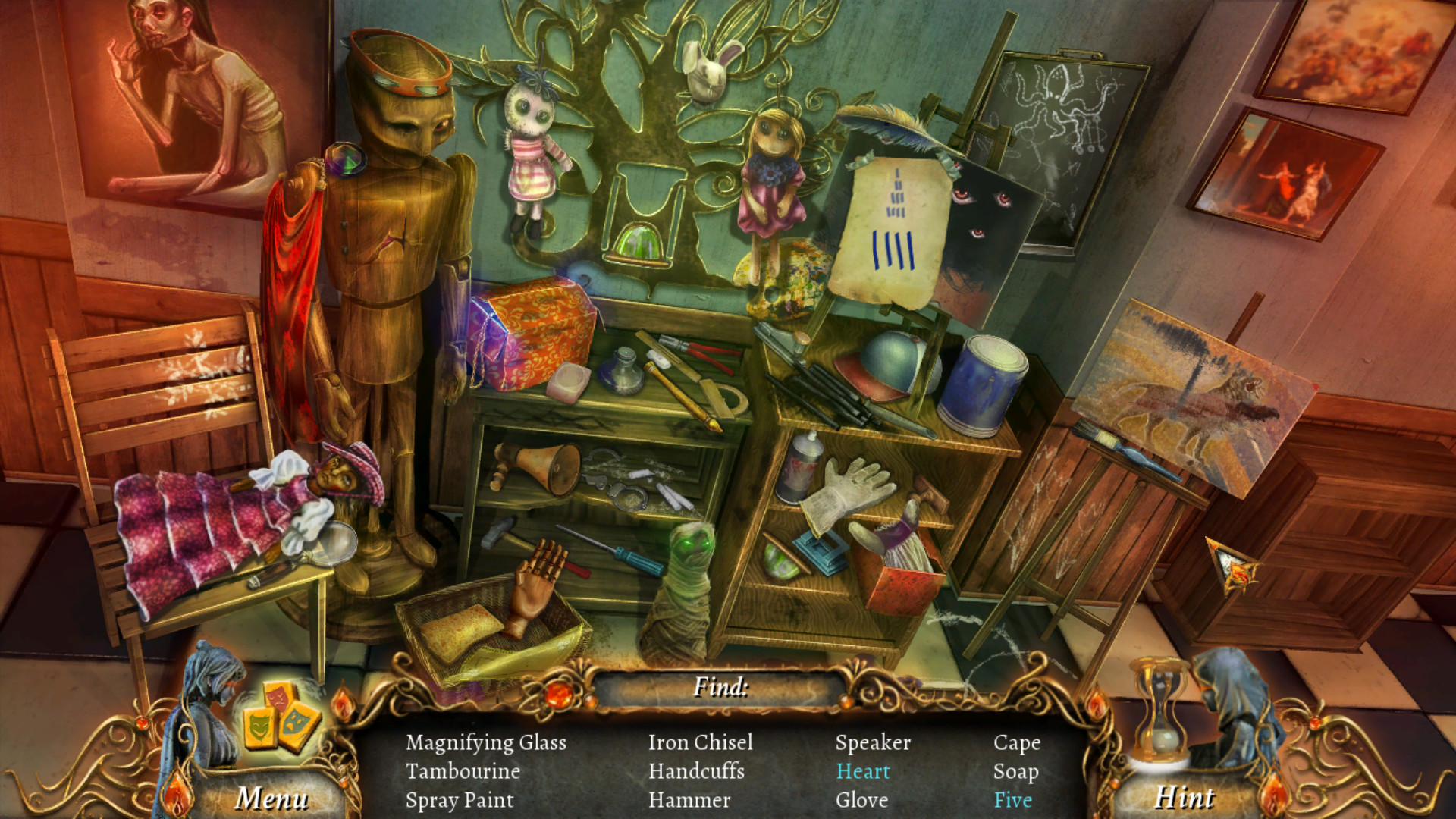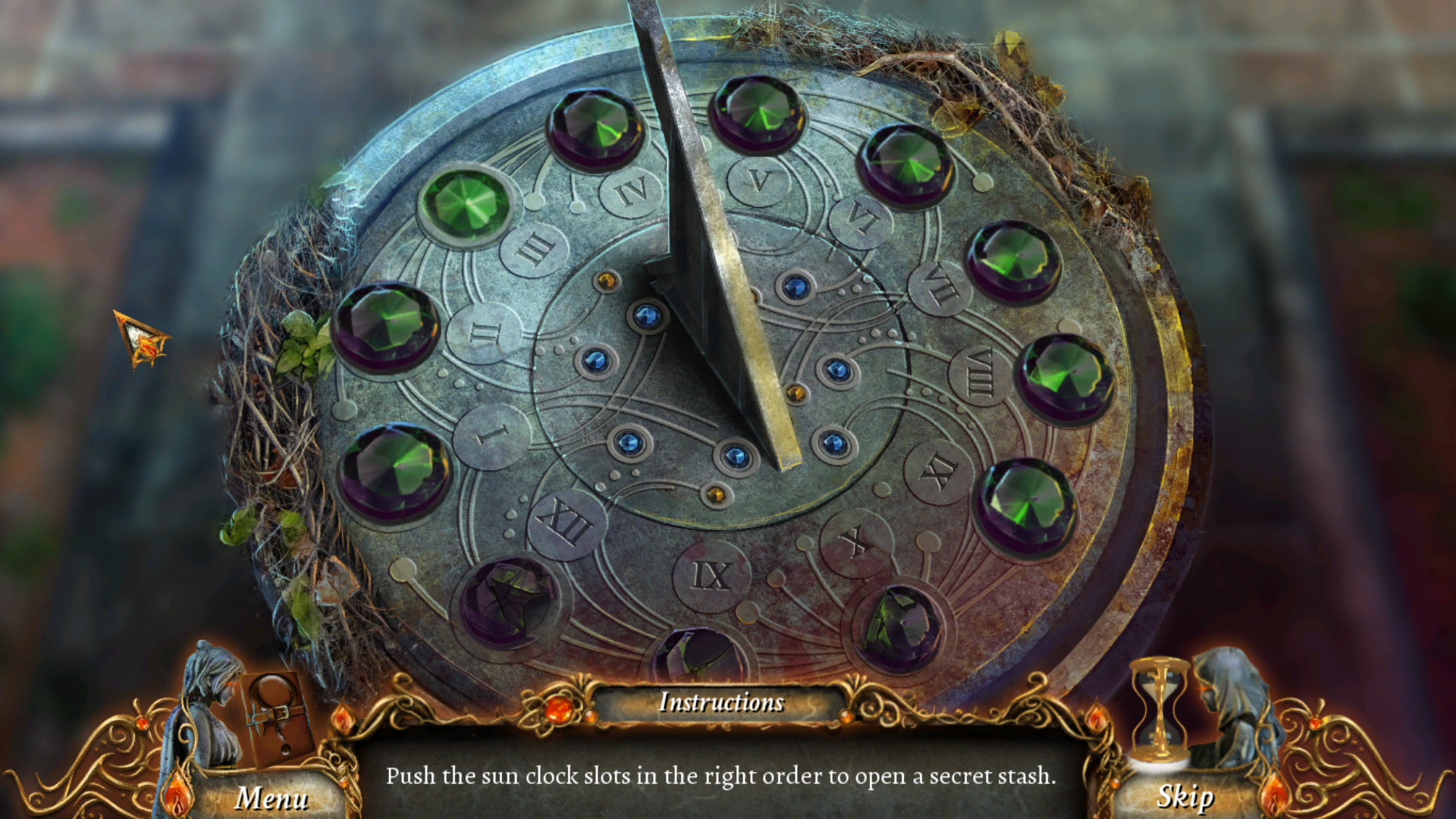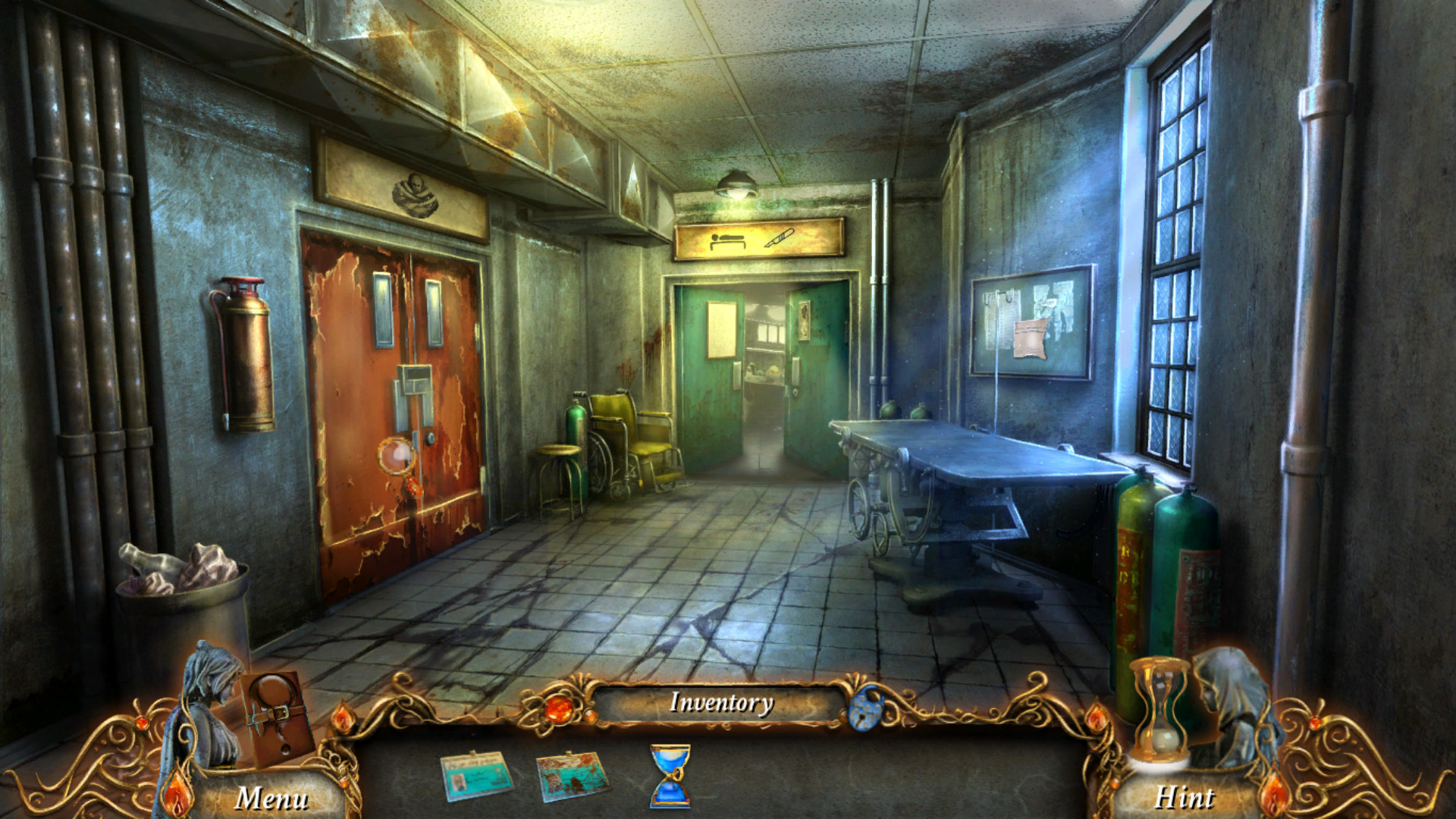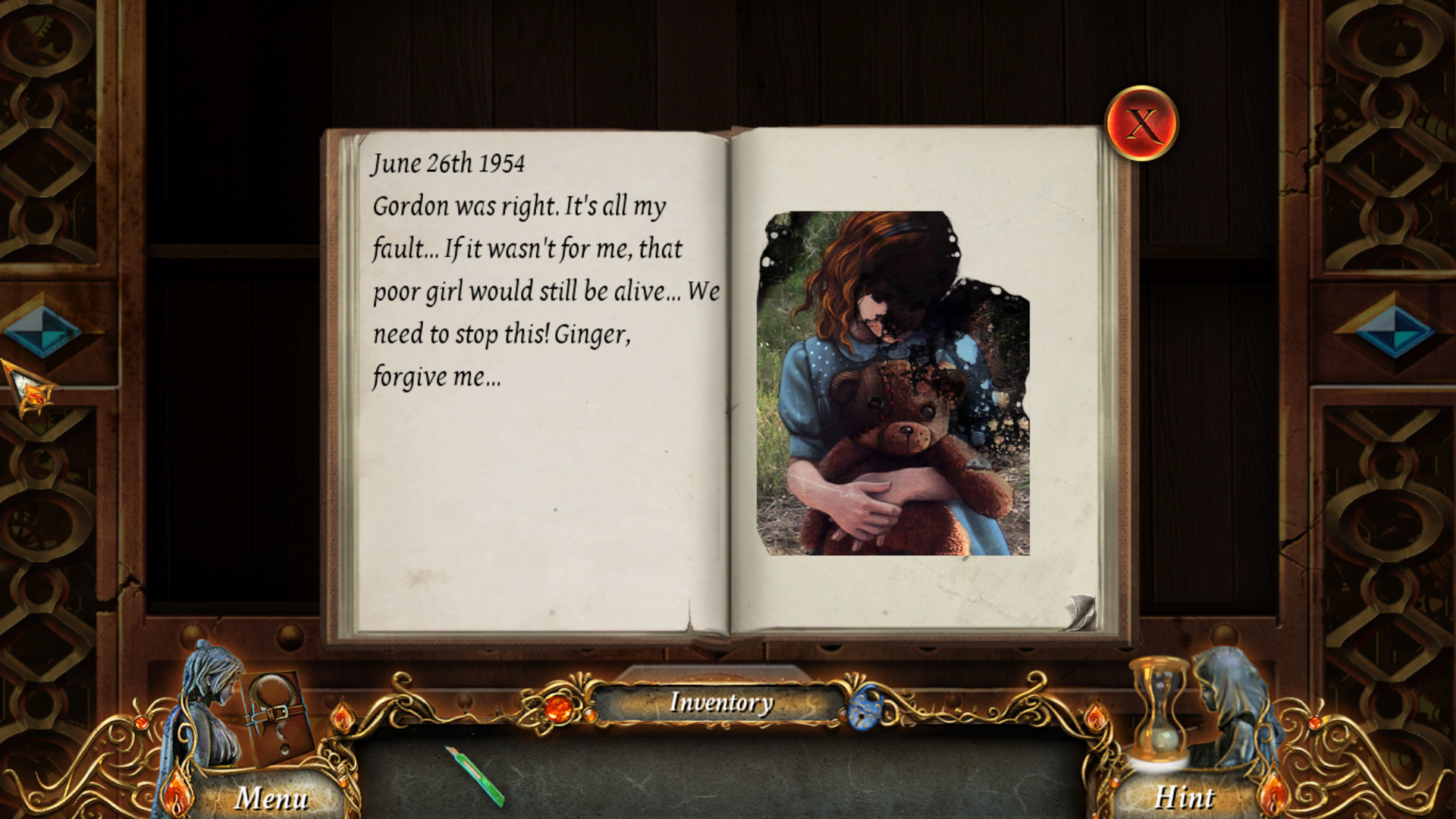The island is isolated by freezing waters and constant, brutal storms. Upon the detectives’ arrival, one of the hospital’s therapists falls out of the window to his death.
As their investigation begins, the detectives learn much darker things are happening at Mnemosyne Asylum than they could have guessed. None of the patients are willing to speak about the devastating fire that engulfed the hospital four years ago, or the fire’s victims. The staff do everything they can to obscure the asylum’s past, and keep the façade of peace and order intact.
Each new clue only raises more questions. Who killed Doctor Crow? What drove one of the male nurses insane? Who is Zed Rascov? Why is the name of a little girl, Ginger, carved into the wood-paneled wall of the dead doctor’s office?

Features
- Detective Mode: solve crime scenes by intuitively placing clues
- Eerie story set in a psychiatric hospital in 1950s America
- 42 atmospheric locations
- 19 challenging mini-games
- 39 achievements to unlock

Irony Curtain: From Matryoshka with Love is a game full of different characters talking to each other. In fact, some puzzles can be solved only by choosing the right dialogue option. Thats why in todays episode of Behind the Irony Curtain wed like to tell you more about the process of creating dialogues in our game.
Writing dialogues is just the beginning of the process. There are over 5471 lines of text in Irony Curtain and every one of them needs to be properly inserted into the game, to make sure all characters say exactly what Game Designer wants, in the exact time and place.

Heres how it looks in Irony Curtain:
1. Every game character usually has more than one dialogue line. One of the ways to operate it is to use logical TRUE/FALSE flags. These flags helps us determine the state of knowledge of a specific character or whether an event of which the character speaks has already taken place.
2. Each dialogue is built in the editor as a separate tree consisting of successive nodes connected with each other by lines defining the order in which the dialogue of the character appears.
3. To be honest, writing dialogues is just filling the form fields. It looks more or less like this:
- Create a new dialogue in the editor and give it a name. Then inform Level Designer about the circumstances in which it should be launched (eg. when Evans checks on the Prisoner);
- Create the first Node (a red dot on the editor screen) and enter the necessary information (into the form on the right side of the screen):

[olist] - Who is talking
- The Dialogue text (or several dialogues if they should be drawn)
- (Optional) The Dialogue text when repeating the talk
- (Optional) If the dialogue happens not on the location but on zoom whose head and on which side should it be displayed
- (Optional) Text display time (its useful when testing the game without recorded Voice Overs which determine the text display time in the finished game)
- Where the text should appear on the screen (e.g. over the character or over the radio speaker)
- (Optional) Actions to be made before or after the dialogue (e.g. acquiring an item or activating a logic flag character X already knows about Y")
[/olist]
- Create another dialogue node and fill it in
- Connect the first node with the second one
- Rinse & Repeat ;)
4. After creating the entire tree for all the dialogues we generate so-called keys. Keys consist of the location number, dialogue name, text position in the tree and the first letter specifying the character.

5. Thanks to this we can assign a specific Key to a Node, and not just the text. All texts with Keys can be saved to a shared Excel sheet with different languages. As a result, the different language versions of the game have the appropriate dialogues.

That is all in this episode of Behind the Irony Curtain. We hope you enjoyed it and don't forget to add Irony Curtain to wishlist!
https://store.steampowered.com/app/866190/Irony_Curtain_From_Matryoshka_with_Love
Minimum Setup
- OS: Ubuntu 12.04 (32/64bit)
- Processor: 1.5 GHzMemory: 512 MB RAM
- Memory: 512 MB RAM
- Graphics: 128 MB VRAM
- Storage: 1 GB available space
Recommended Setup
- OS: Ubuntu 12.04 (32/64bit)
- Processor: 2 GHzMemory: 1 GB RAM
- Graphics: 256 MB VRAM
- Storage: 1 GB available space
[ 6488 ]
[ 2221 ]
[ 1907 ]

